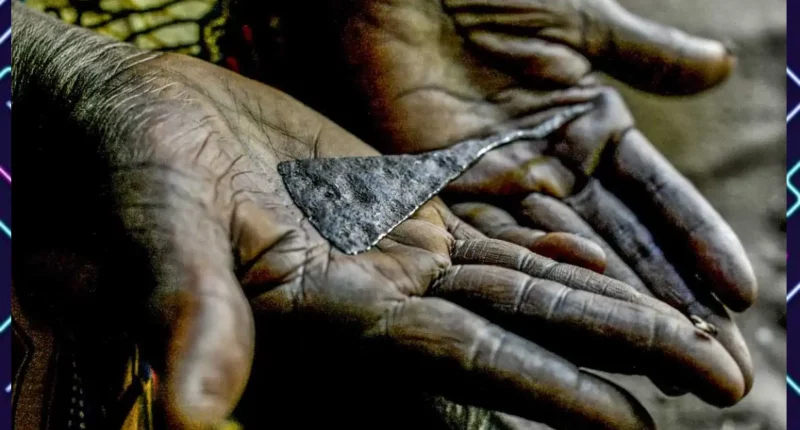Female genital mutilation (FGM) is a harmful traditional practice that involves the partial or total removal of the external female genitalia for non-medical reasons. Despite being illegal in many countries, it continues to be performed on millions of girls and women worldwide, primarily in Africa, the Middle East, and some parts of Asia.
While FGM is often justified by cultural traditions and beliefs, it has severe and long-lasting consequences that can profoundly impact a woman’s physical and mental health.
Before we discuss the downside, here’s an expert personal experience
In 2019, I experienced a profound revelation about female genital mutilation (FGM) that reshaped my understanding of this critical issue. This awakening began when a talented young journalist, Omobolanle Adesuyi, approached me for guidance and an interview regarding my work in the field of FGM. Her passion for reporting on this topic was infectious, and it prompted me to reflect on my own journey in advocating against this harmful practice.
My involvement with FGM started in 2017 during a visit to an immunization clinic in Ibadan, southwest Nigeria. While waiting for my daughter’s vaccination, I encountered a fellow nursing mother who proudly proclaimed her intention to circumcise her baby girl. Despite my best efforts to persuade her against this decision, my voice as a young mother without a medical title fell on deaf ears. The other mothers present largely supported the idea of circumcision, viewing it as a cultural norm. This experience opened my eyes to the struggles many young mothers face when deciding whether to subject their daughters to FGM, often with little guidance or support.
When I spoke with Omobolanle, she shared alarming statistics about FGM in Nigeria. According to her research for The Impact Africa TV Network (IATV), approximately 200 million girls and women worldwide have undergone FGM, with at least 20 million of them in Nigeria alone. UNICEF reported in December 2018 that six out of ten women aged 15 to 49 in Oyo State are victims of FGM, placing the state among the highest in Nigeria. This revelation shocked me, as discussions about FGM have become more prevalent, yet I had not anticipated the statistics to be so staggering.
Additionally, I raised concerns about the accuracy of the data. Many women may not even be aware if they have been cut or not, leading to uncertainty in reporting. In Ibadan, FGM continues to be practiced, particularly in rural communities where traditional beliefs persist. Perpetrators often claim that FGM offers various benefits, such as improved hygiene and protection against diseases. These assertions are misleading and rooted in harmful myths.
One local perpetrator, who has mutilated her three daughters and granddaughters, defended her actions by citing cultural taboos and consequences associated with not circumcising girls. Her husband, Mr. Oyetunde, supported her claims, further entrenching the cycle of misinformation.
Recent data evidence shows the ongoing challenges in combating FGM. As of 2023, the United Nations Population Fund (UNFPA) estimated that nearly 4.3 million girls are at risk of undergoing FGM, a figure that has risen due to the disruptions caused by the COVID-19 pandemic. The pandemic hindered prevention programs, potentially leading to an increase in FGM cases over the next decade.
Despite the progress made in some areas, the fight against FGM remains urgent. The global community has set a target to eliminate FGM by 2030 as part of the Sustainable Development Goals. However, achieving this goal requires concerted efforts to educate communities, empower women, and challenge the deeply rooted cultural beliefs that perpetuate this practice.
As I continue my advocacy work, I am reminded of the importance of raising awareness and providing support to those affected by FGM.
Female Genital Mutilation Downside
1. Immediate Health Risks of FGM
- The cutting of sensitive genital tissue causes extreme pain, and the healing process can also be agonizing.
- If major blood vessels are cut, it can lead to significant blood loss, which can be fatal if not treated immediately.
- FGM is frequently performed with unsterilized instruments, leading to a high risk of infections such as tetanus and other bacterial infections. The use of the same tools on multiple girls increases this risk significantly.
- The combination of pain, infection, and blood loss can lead to shock, which is a medical emergency.
These immediate risks highlight the brutal nature of FGM and the lack of medical justification for the practice.
2. Long-Term Health Consequences
- Chronic Pain: Many women experience ongoing pain due to nerve damage and scarring from the procedure.
- Infections: Persistent infections in the genital area can lead to chronic pain, discharge, and other complications.
- Cysts and Abscesses: The removal of healthy tissue can lead to the formation of cysts and abscesses, which may require surgical intervention.
Infertility: FGM can damage the reproductive organs, leading to complications that may result in infertility. - Urinary Problems: Women may experience painful urination or urinary retention, particularly if they have undergone infibulation, where the vaginal opening is narrowed.
- Complications During Childbirth: Women who have undergone FGM are at a higher risk of complications during labor, including obstructed labor, which can lead to the need for cesarean sections and increase the risk of newborn deaths.
3. Psychological Impact
The psychological ramifications of FGM are profound and often overlooked. Many women report feelings of trauma, anxiety, and depression related to their experiences. The procedure can create a sense of betrayal, especially when it is carried out by family members or trusted community figures. Survivors may struggle with intimacy and sexual relationships due to the pain and psychological scars left by FGM.
4. Societal and Cultural Implications
FGM is not just a health issue; it is a manifestation of deep-rooted gender inequality and societal norms that prioritize control over women’s bodies. The practice is often perpetuated by cultural beliefs that equate FGM with purity, honor, and social acceptance. Efforts to eradicate FGM face significant challenges due to these entrenched cultural practices.
Research and Knowledge Gaps
One of the critical issues in addressing FGM is the lack of comprehensive research that informs effective interventions. Significant gaps exist in understanding the health outcomes associated with FGM, particularly concerning mental and sexual health. Studies have shown that women who have undergone FGM often experience negative psychological effects, yet there is a scarcity of targeted research on effective mental health interventions for these individuals. Additionally, there is a pressing need for more robust data on the prevalence and incidence of FGM, especially in regions where the practice is declining or shifting due to migration.
Closing the gap in the fight against FGM requires a multifaceted approach that combines research, legislation, community engagement, and education. It is essential to empower communities with knowledge about the risks associated with FGM and to provide support for those who have undergone the procedure. As we move towards the 2030 target for eliminating FGM, it is crucial to scale up efforts, particularly in areas where the practice remains prevalent. By working together—governments, NGOs, healthcare providers, and communities—we can create a future where no girl is at risk of FGM and where the rights and health of women and girls are fully protected.
ALSO READ: 12 Effects of Excess Sugar in Females: Key Downsides
References
- UNICEF. Female genital mutilation. https://data.unicef.org/topic/child-protection/female-genital-mutilation/
- United Nations Population Fund. Female genital mutilation (FGM): Frequently asked questions. Retrieved from https://www.unfpa.org/resources/female-genital-mutilation-fgm-frequently-asked-questions
- The Lancet. (2022). Female genital mutilation: A global health issue. Retrieved from https://www.thelancet.com/journals/eclinm/article/PIIS2589-5370%2822%2900542-9/fulltext
Note: This article is written based on scientific evidence found by the soundhealthandlastingwealth.com team. Sources are duly referenced and are accessible for confirmation.









